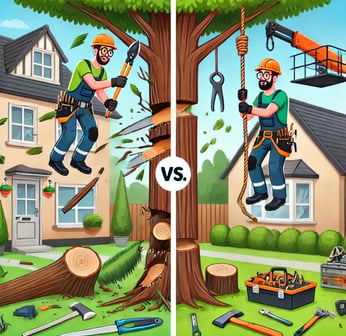Debunking the Top Myths About Tree Removal
Top Myths About Tree Removal Debunked Address common misconceptions about the tree removal process, costs, and environmental impact.
11/22/20242 min read


Introduction to Tree Removal Misconceptions
Tree removal is a topic that is often surrounded by various myths and misconceptions. Many property owners grapple with fears about the process, costs, and Environmental consequences of removing trees from their properties. In this article, we aim to debunk some of the most common myths about tree removal to help you make informed decisions.
Myth 1: Tree Removal is Always Expensive
One prevalent myth about tree removal is that it always comes with a hefty price tag. While costs can vary greatly depending on the size, location, and type of tree, there are affordable options available. Professional tree removal services often offer estimates that take into account the specific circumstances of each job. Additionally, some companies may provide discounts or bundled services to minimize expenses. It is essential to consult with multiple providers to find a price range that suits your budget.
Myth 2: All Trees Should Be Removed
Another common misconception is that all trees that appear problematic should be removed. In reality, many trees can be pruned or treated rather than removed entirely. Consulting with a certified arborist can help assess the health and stability of a tree. Arborists can provide recommendations for treatment options that may prolong the life of the tree and reduce the need for removal. In some cases, simply maintaining the tree can enhance the landscape while fostering a healthier environment.
Myth 3: Tree Removal Harms the Environment
Many people believe that tree removal is detrimental to the environment. However, this notion does not take into account the larger context of forest management and the importance of maintaining the health of a landscape. Dead or dying trees can pose risks to other surrounding trees and wildlife. When trees are removed properly, they can make way for new growth and improve the overall health of the ecosystem. Moreover, in urban areas, tree removal can sometimes be necessary to make space for infrastructure improvements.
Conclusion: Informed Decision-Making in Tree Removal
Understanding the facts about tree removal is crucial for property owners in making informed decisions. By debunking common myths, individuals can better navigate the complexities associated with tree care and removal. Whether addressing cost concerns, misjudging the condition of trees, or fearing environmental damage, accessing reliable information will ensure that tree removal is carried out responsibly and beneficially. Always consult with professionals to set realistic expectations and gain insights into the best practices for your specific tree removal needs.
